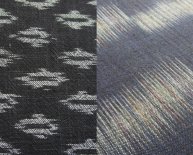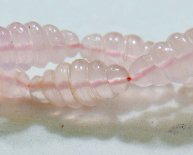May 21, 2018

Polyester melting temperature
 Should you be using a polypropylene or polyester sewing thread? We compare these two different materials to help you decide.
Should you be using a polypropylene or polyester sewing thread? We compare these two different materials to help you decide.
Polypropylene - Advantages:
- Lower specific gravity/density (0.91 g/cm³) – More fibers/unit weight (~25% more).
- More hydrophobic – absorbs less water and therefore dries faster.
- Lower heat transfer – Retains more heat.
- Inert to most chemicals.
Polypropylene – Disadvantages:
- Lower Melting Point 165 degrees C.
- Lower UV resistance – needs additives like Carbon Black to prevent rapid deterioration with UV exposure.
- Lower Strength – requires larger thread or yarn to meet strength targets.
- Lower creep resistance and higher elongation.
- Poor abrasion resistance.
- Not suitable for high speed sewing applications.
Polyester Advantages:
- Higher strength, tenacity and creep resistance – distinct advantage in Geotextiles and especially when load is on a fabric.
- Greater yield per pound.
- Higher melting point (260°C vs 165°C).
- Withstands high temperature washing and drying.
- More UV resistant - Retains strength and color better.
- Resistant to most chemicals.
- Has good flame resistance and flame retardant properties.
- Has good abrasion resistance.
- Polyester is used more for sewing – Higher strength and can withstand high temperatures generated during the sewing process (up to 350°C).
- Polyester produces a better all-around fabric and sewing thread.
Polyester Disadvantages:
- Higher specific gravity.
- Less hydrophobic, requires additives or coating to prevent wicking.
- Susceptible to damage if exposed to highly alkaline chemicals.
















